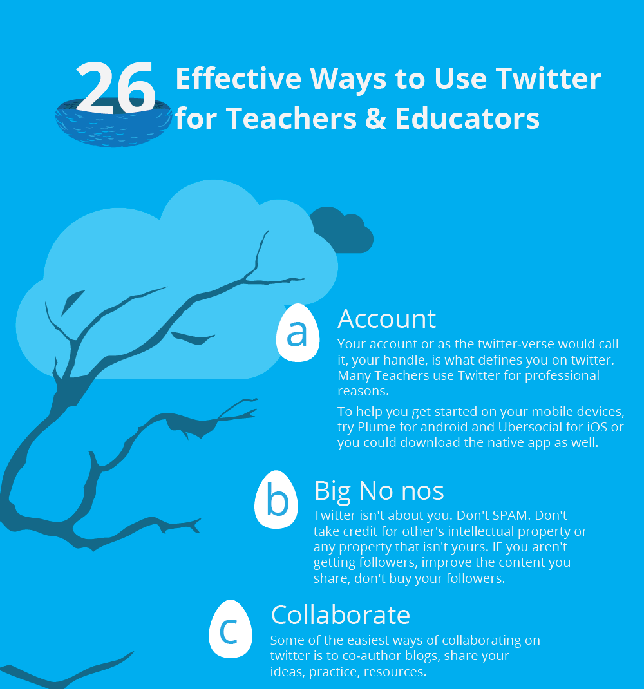
For educators, Twitter can be a distraction or a gold mine of resources. The school management software company Fedena has put together a handy, helpful graphic that offers 26 effective ways to use Twitter for teachers and educators.

A tool used by more than 2.5 million people worldwide to create forms and publish them online has been improved to allow users to build forms via mobile devices.

Twelve public higher education institutions in Maryland have been awarded grants to ramp up the use of open educational resources.

The global cloud-based English Language Learning (ELL) market is expected to grow at a compound annual growth rate (CAGR) of 27.07 percent from 2017 to 2021, according to a new report by market research firm Research and Markets.

New location-aware “knowledge injections” on the cloud-based EON Reality Augmented Virtual Reality platform provide contextual knowledge in real time, helping users to facilitate a manufacturing, maintenance, repair or operation procedure, and more.

A new web program by Google allows users to explore the world in virtual reality (VR) by just speaking the name of a place. Speak to Go is activated by a user’s voice.

Adobe has released the latest versions of its e-learning authoring tool, Adobe Captivate, and its learning management system (LMS), Adobe Captivate Prime. The two are designed to be used in conjunction as end-to-end solutions, or as standalone offerings, and are aimed toward specialists in learning and development, training and corporate HR departments.

Worldwide IT spending is projected to total $3.5 trillion in 2017, a 1.4 percent increase from 2016, according to market research firm Gartner, Inc. This growth rate is down from the previous quarter’s forecast of 2.7 percent, due in part to the rising United States dollar.

Indiana University is out with a numbers update for its eText initiative that delivers digital course materials to students: eText has grown 56 percent over the previous academic year and saved students $3.5 million to date.

Virtual reality (VR) has found its way into the educational space, and by all indications, it’s here to stay. Since VR glasses can be obtained for as low as $10 apiece, cost is becoming less of an issue. Here are three guidelines toward introducing VR in e-learning courses.